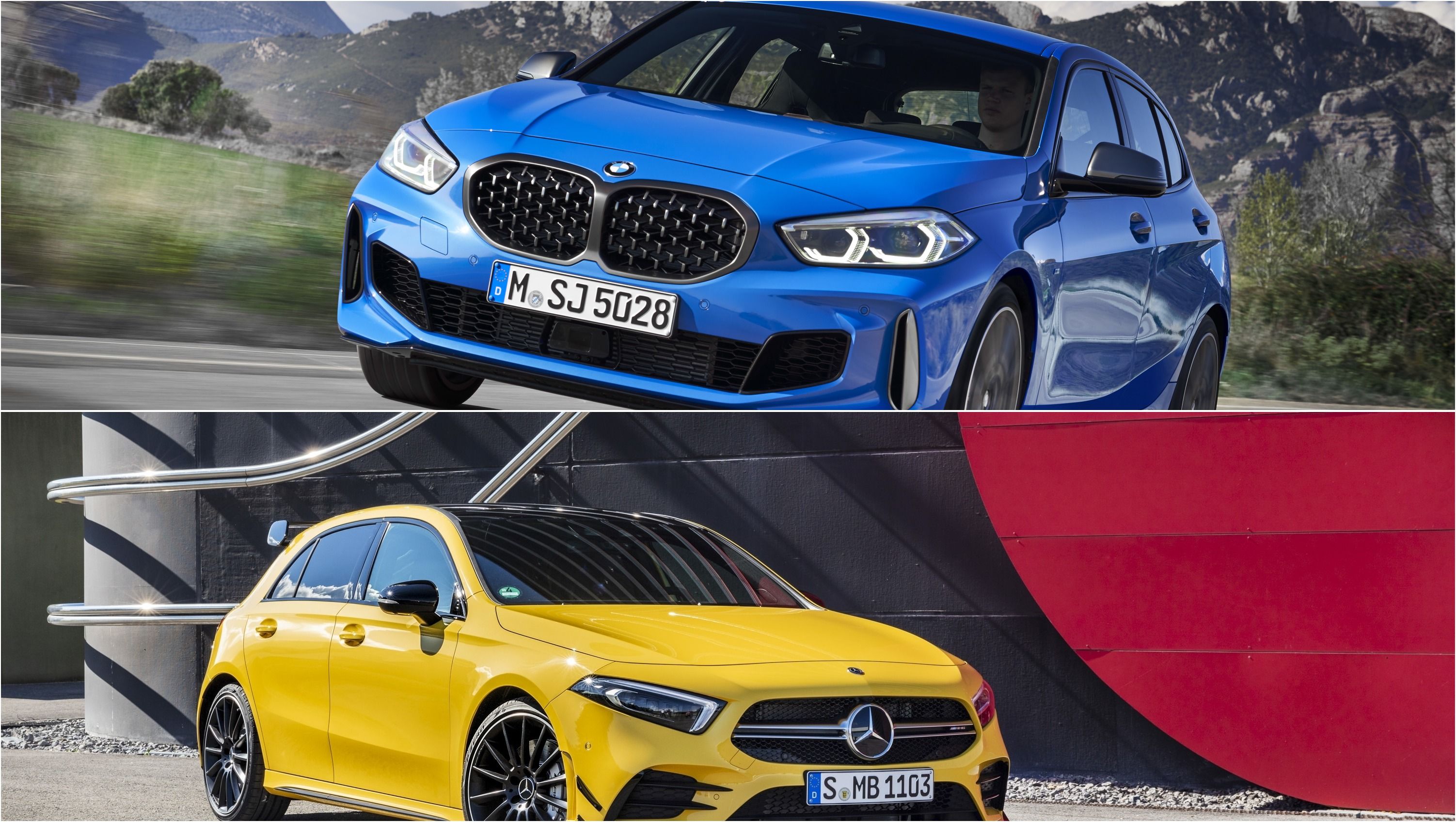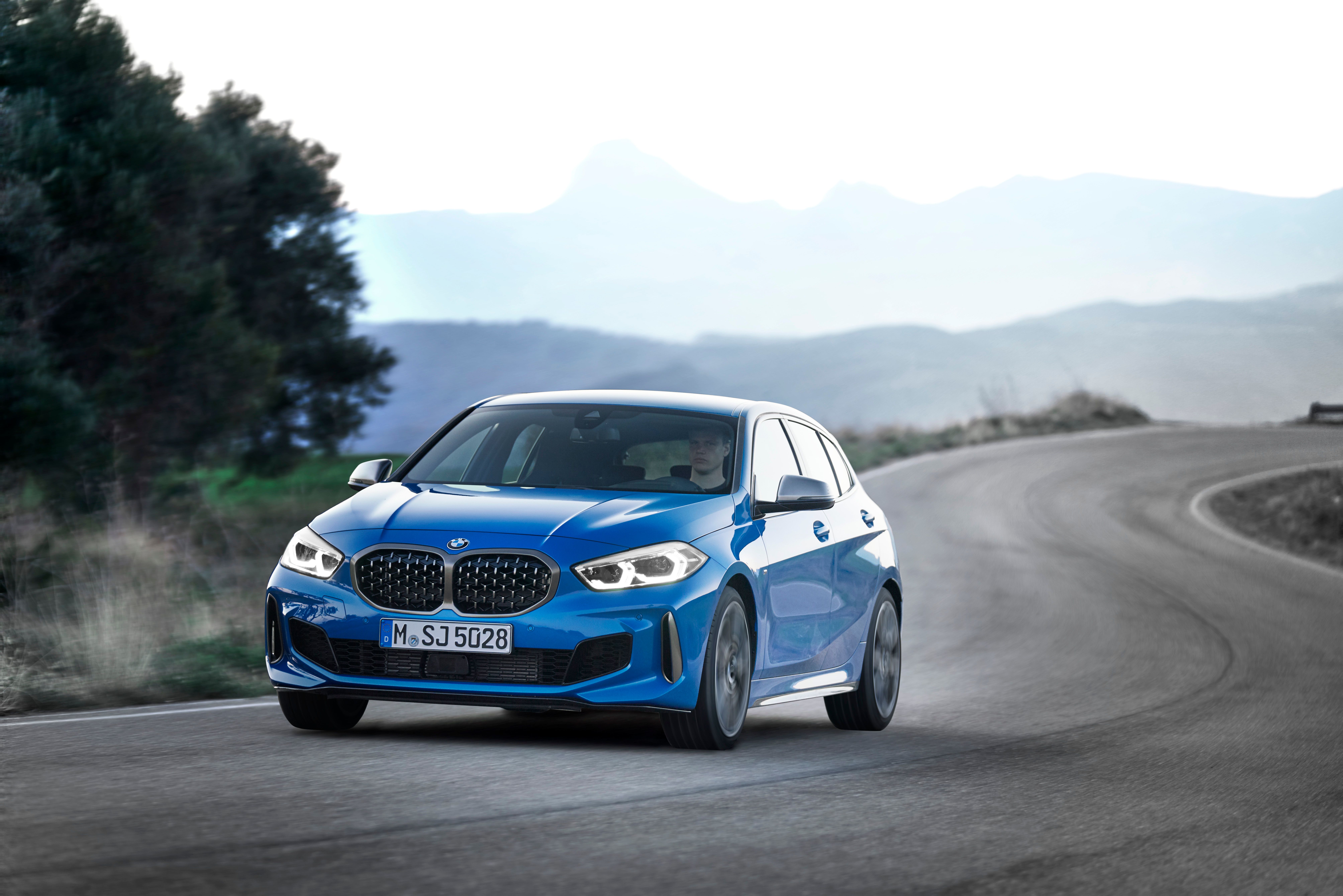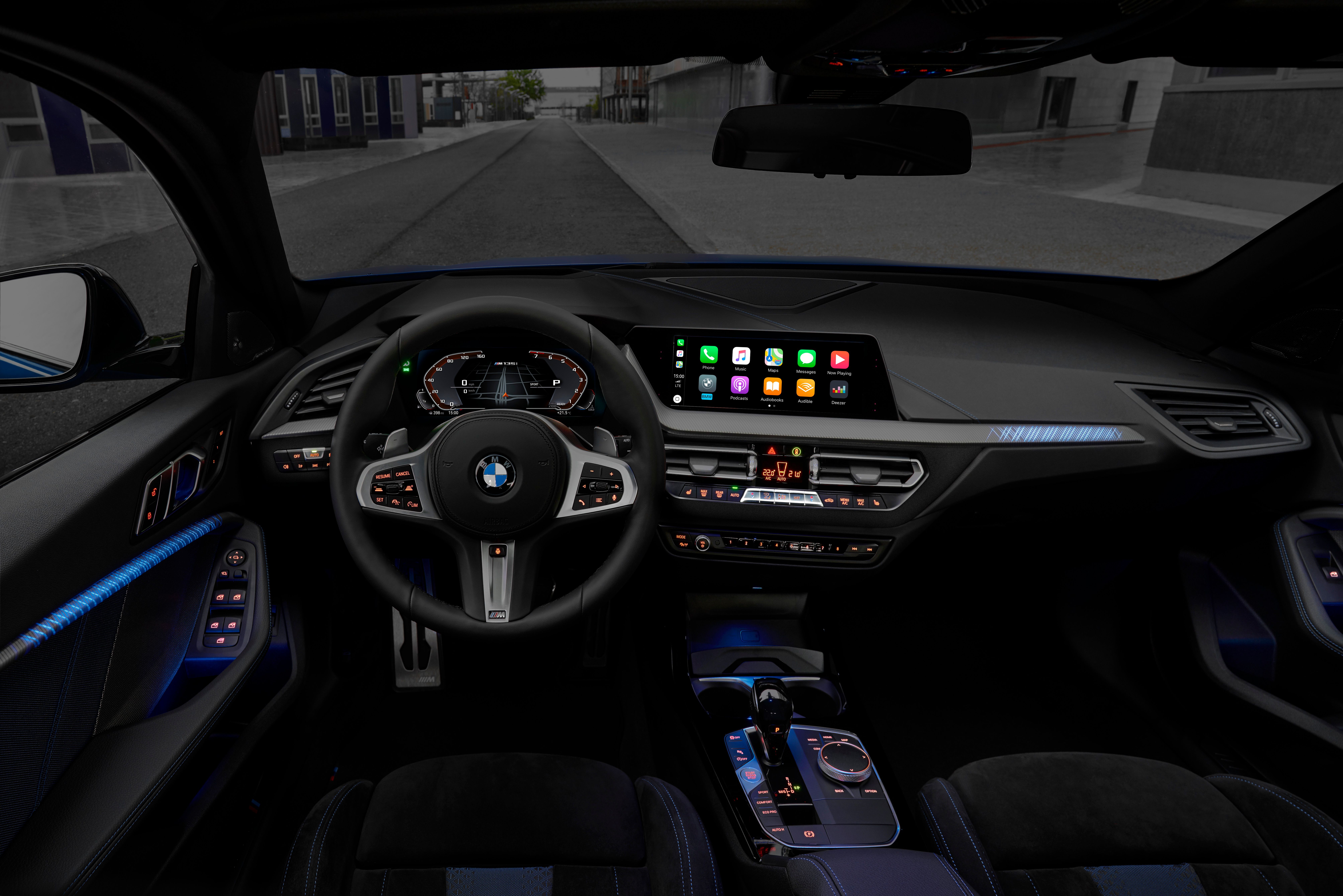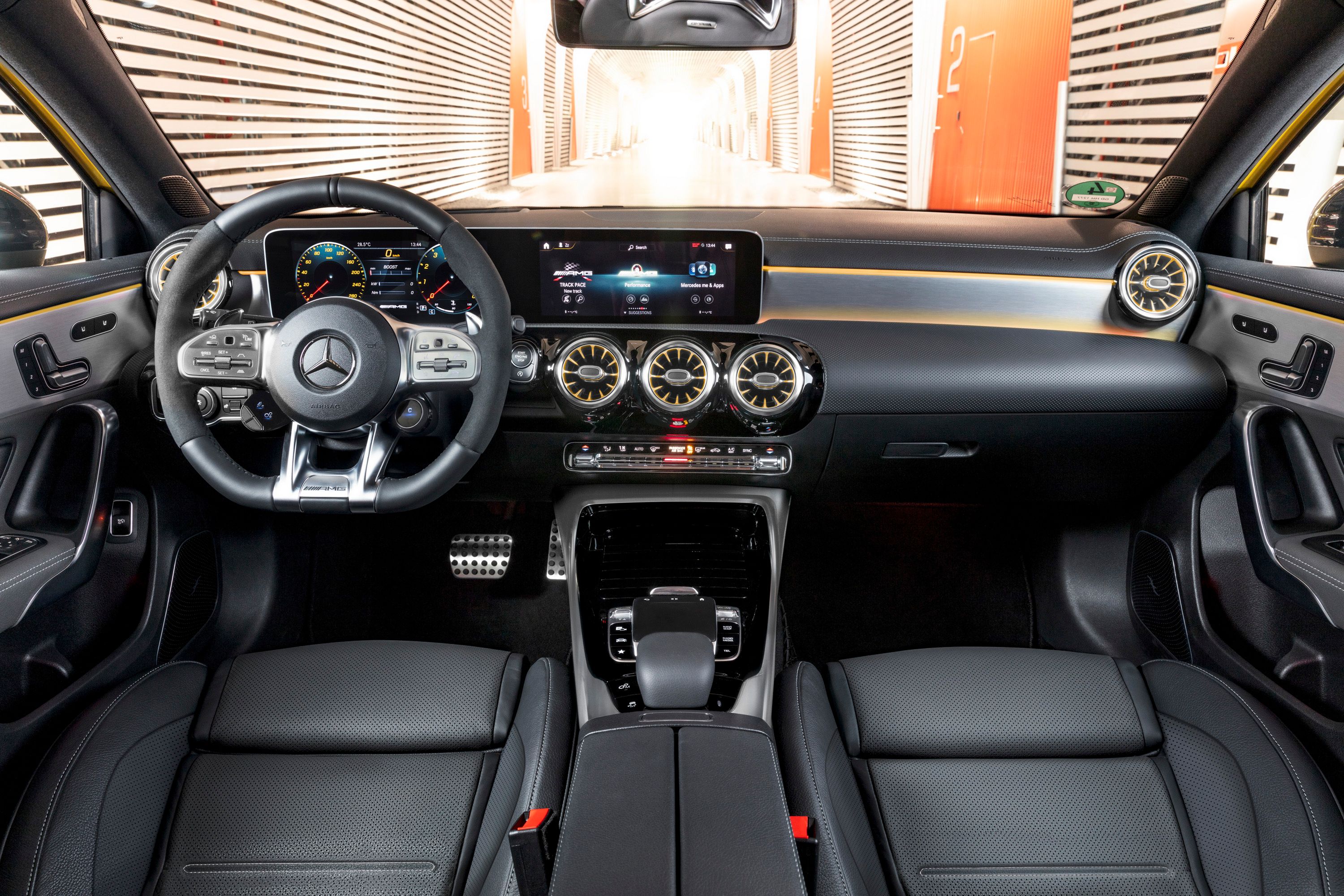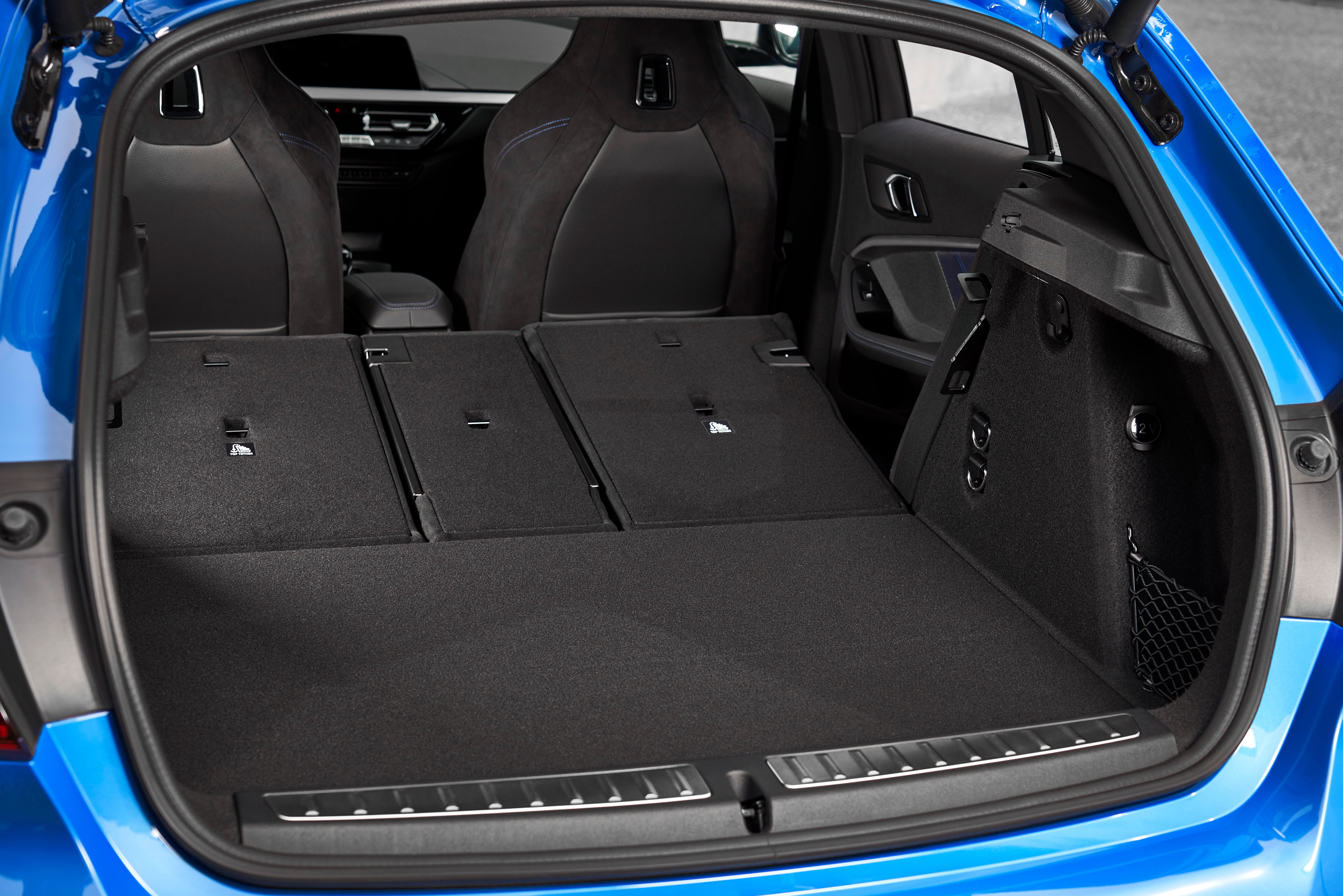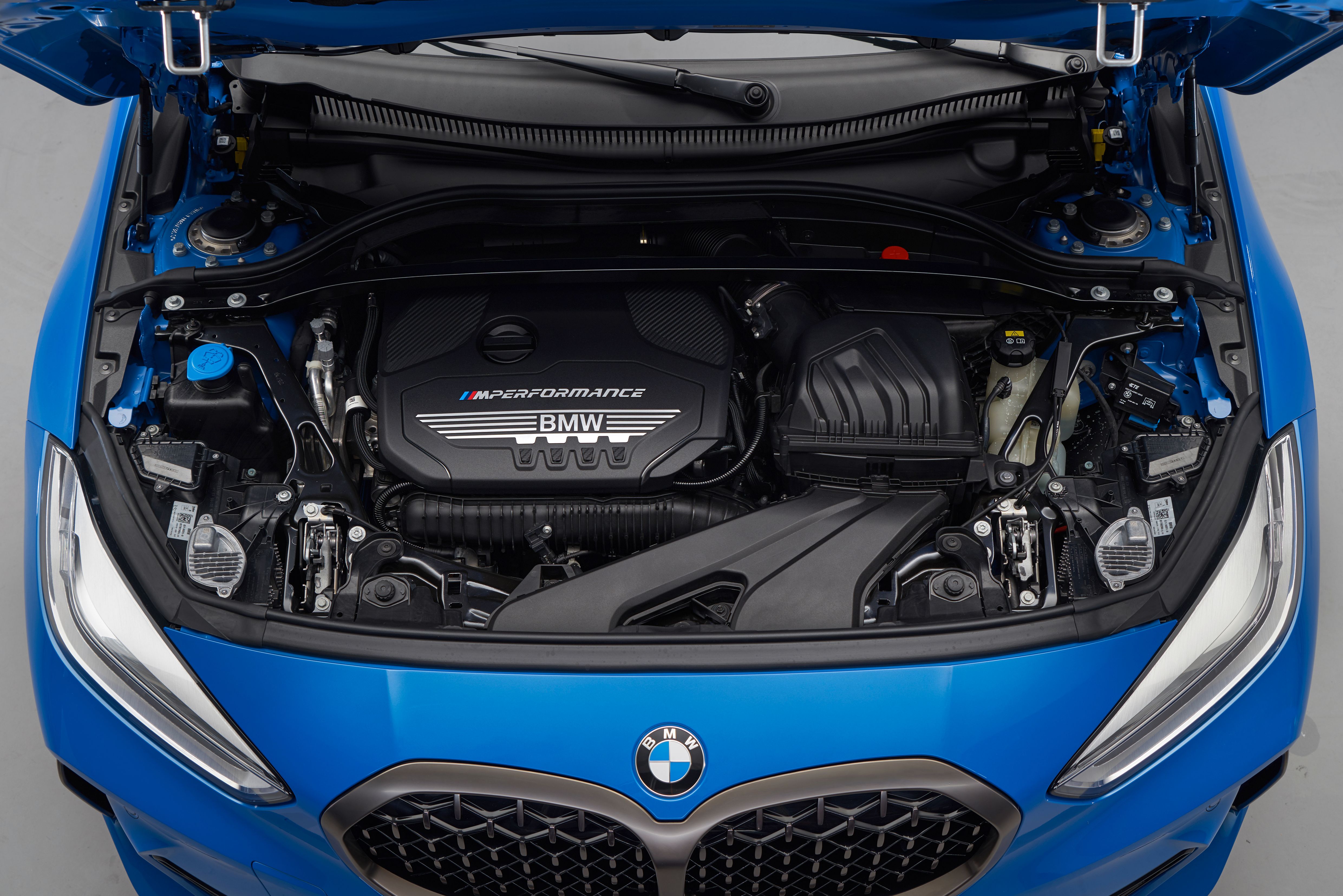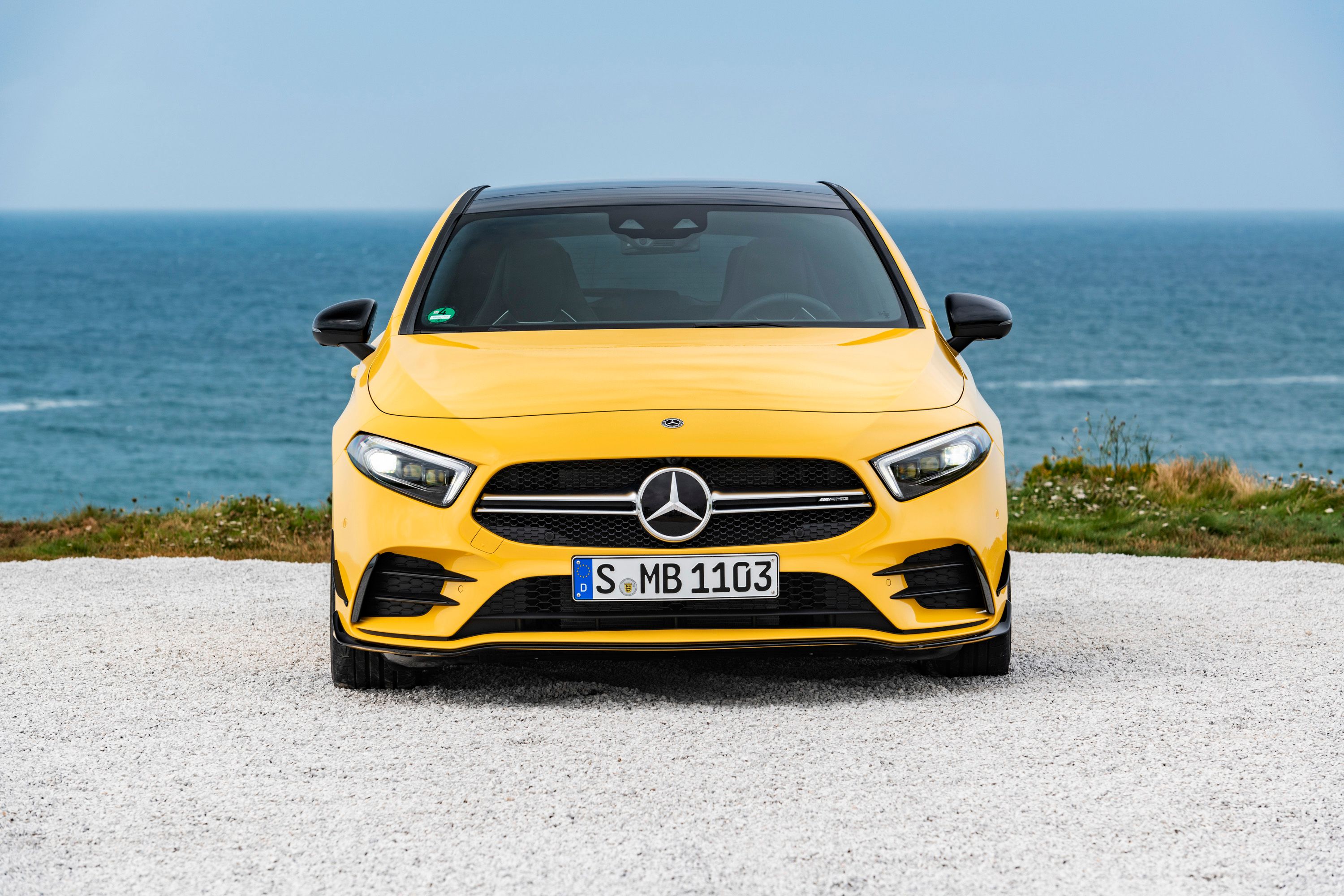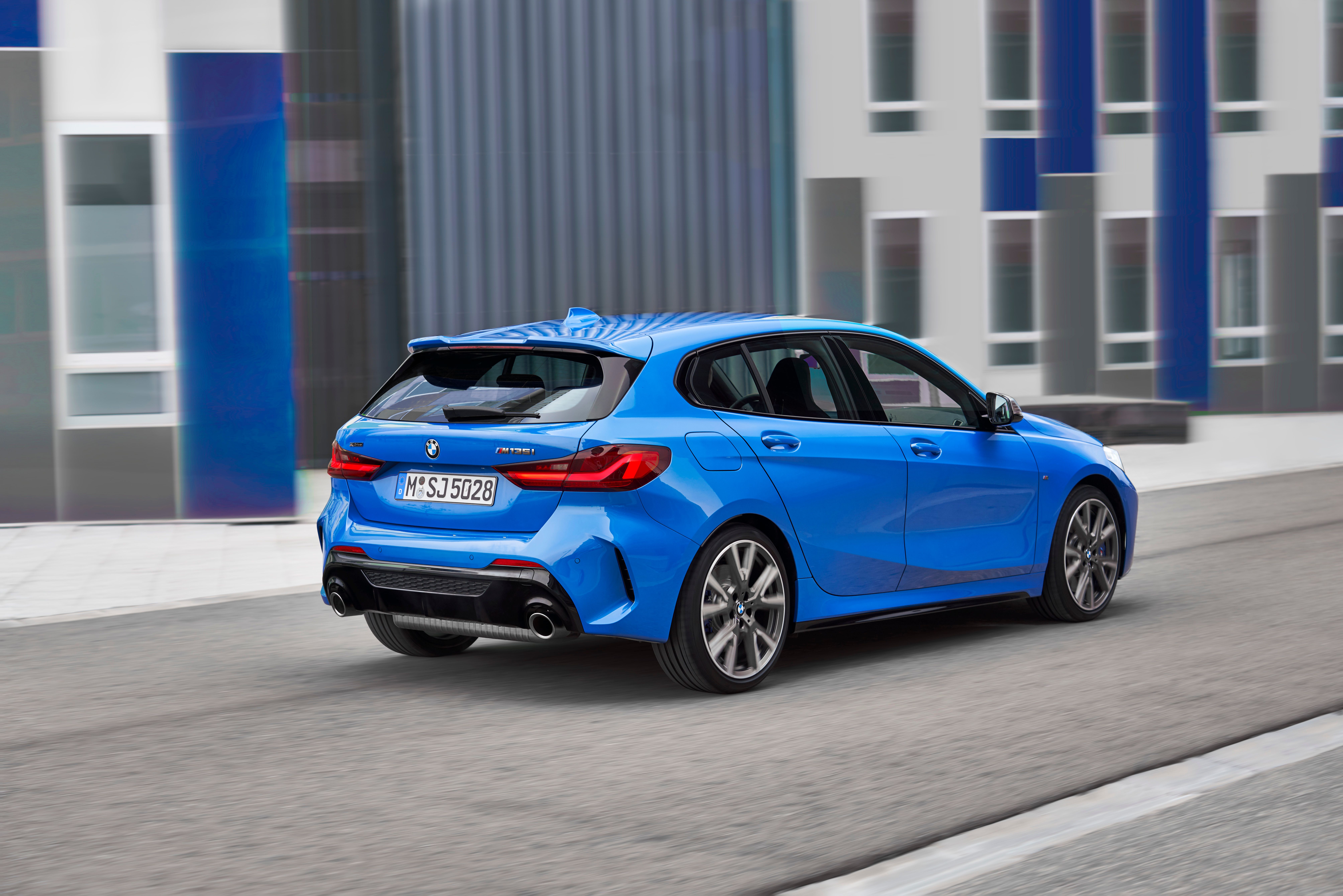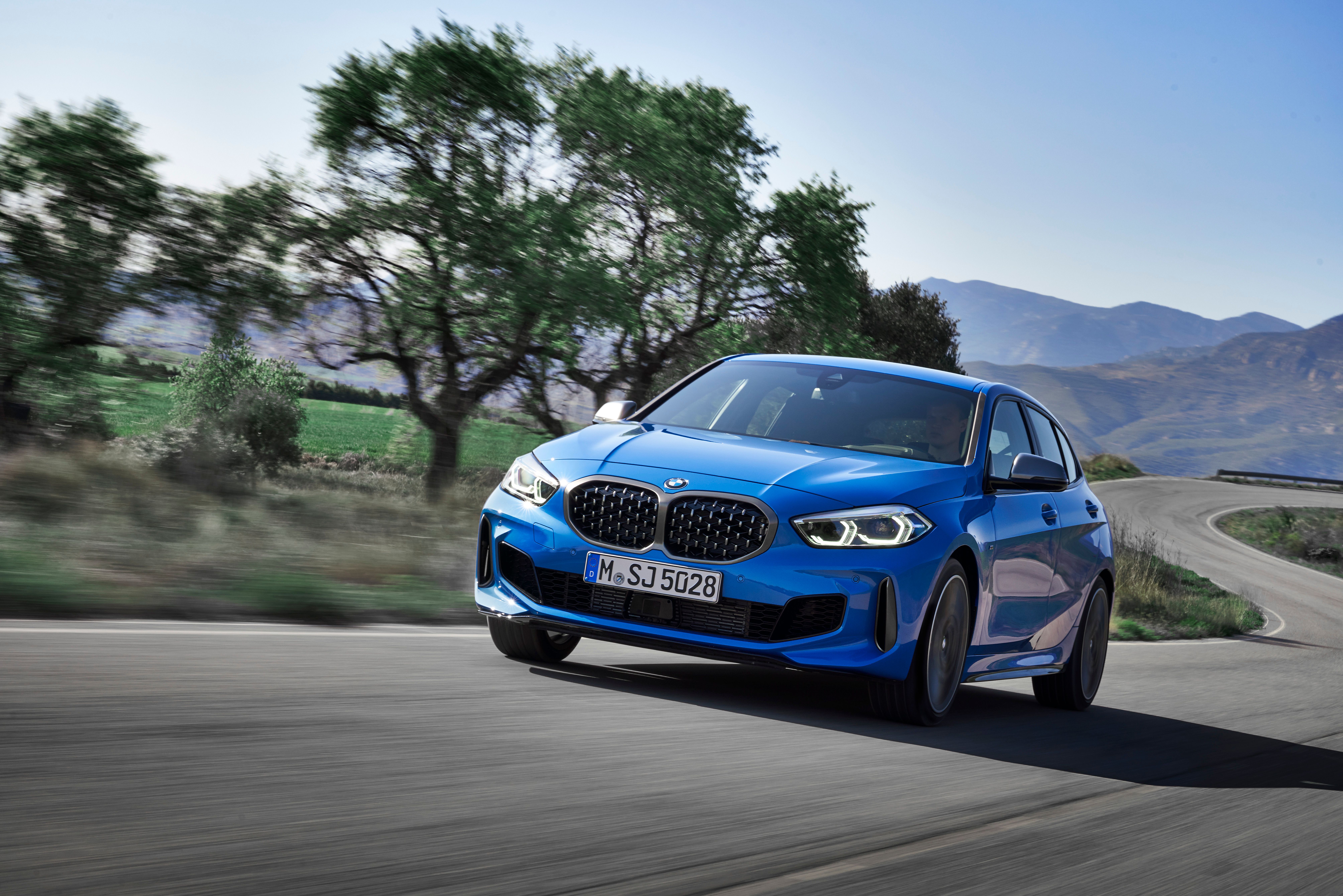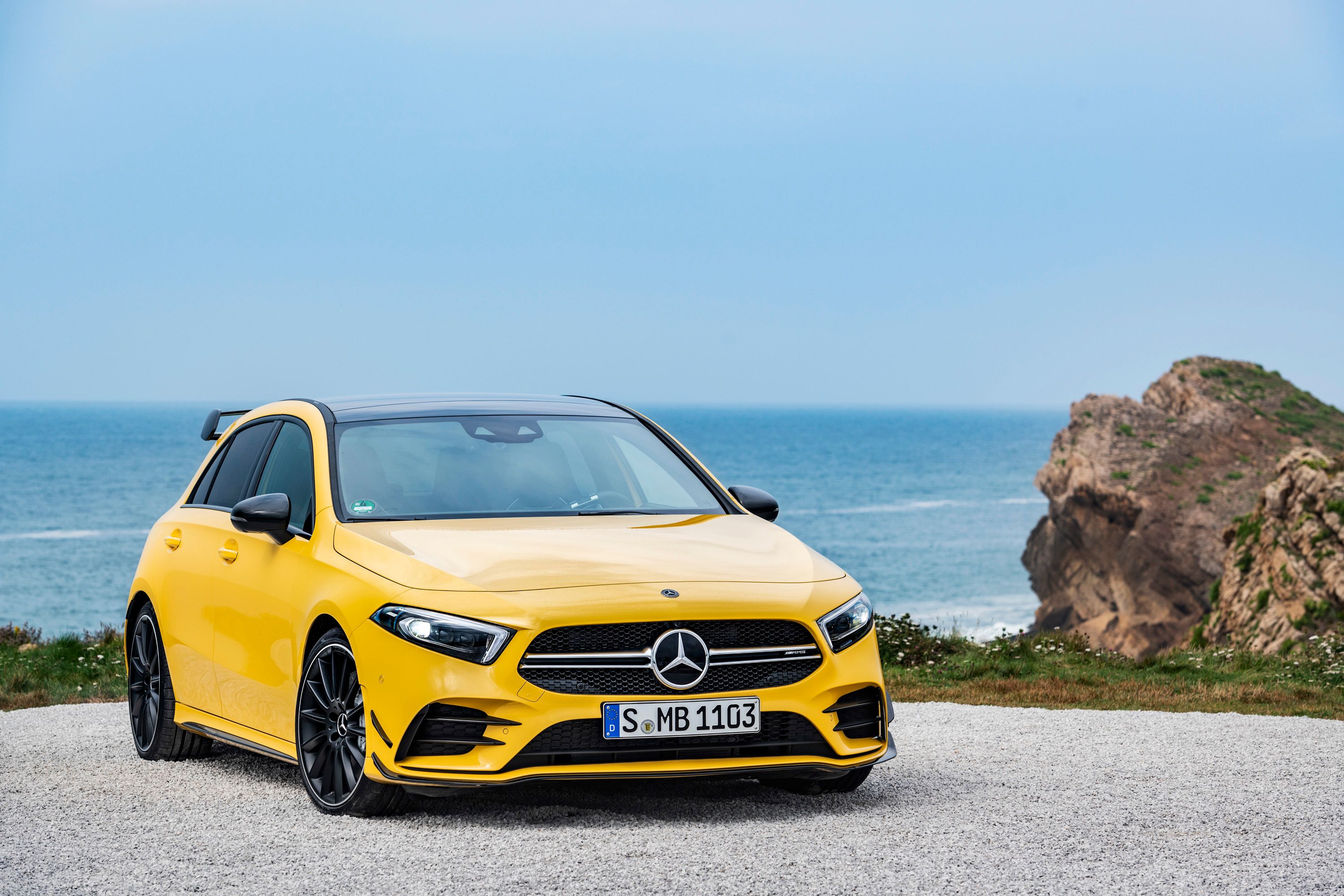BMW has taken a leap of faith after looking over the fence at Mercedes and its highly successful A-Class and launched its own front-wheel-drive hatchback, the new 1-Series. Naturally, since BMW is a manufacturer with sporting aspirations, its new 1-Series will be sold as an all-wheel-drive hot hatch too, the M135i that almost perfectly mirrors the formula (and specs) of the spiced up Mercedes-AMG A35.
It’s as if the two rival manufacturers copied each other’s formulas, then went ahead and materialized the idea in their own way and their own style. The result is two highly enticing premium hot hatchbacks with oodles of appeal and bags of charm - but which one do you go for?
There are probably few rival models in the world right now that are so close in so many ways, yet their manufacturers are completely separate entities. If you were to choose one of these cars based on performance, you’d have a very hard time doing so because they are almost identical. But even so, they will undoubtedly be cross-shopped, so a conclusion should be reached as to which one is the better buy - a tall order, no doubt, that will require an in-depth analysis of each taken separately, as well as both together and in the current market context.
Exterior Design
BMW has fully embraced the fact that its new 1-Series is a front-wheel drive car with a transverse-mounted engine. As a result, the car’s front part is quite short by BMW standards and, overall, the vehicle’s look and proportions are very clearly those of a traditional front-driven hatchback. That means the automaker was able to turn the new M135i into a very believable hot hatch with a few tweaks.
|
|
ids=842812,842813 |
no_overlay=false |
before_label=2020 BMW M135i |
after_label=2020 BMW 118i> |
For the rear end, BMW went with a fake diffuser style lower part of the bumper, completed by vertical fake to the sides. With that being said, it’s not a bad look, undeniably helped by the sheer size of its twin exhaust tips - it’s these exhausts that dominate the look of the rear end, along with the oversized light clusters. The rear end look is rounded off by a subtle spoiler stuck to the top of the hatch.
|
|
ids=842806,842807 |
no_overlay=false |
before_label=2020 BMW M135i |
after_label=2020 Mercedes-AMG A35> |
Should you want to make it even more eye-catching and extreme looking, BMW offers a whole host of M Performance parts to dress it up. These really spruce up the car and make it look like a bit of a touring car - a look that will please some hardcore enthusiasts, but one that others may question and declare that “it is a bit too much.”
Just like the M135i, the Mercedes-AMG A35 is a dressed up version of lesser A-Class models.
|
|
ids=842808,842809 |
no_overlay=false |
before_label=2020 BMW M135i |
after_label=2020 Mercedes-AMG A35> |
It’s not a bad look; it’s just more obvious out of the box. Down the sides, you notice the big rims finished in black, black blades that run along the side skirts and black mirror caps and trim pieces. The rear bumper features what looks like something much closer to an actual diffuser (one that does actually let air through, it’s not just there for show like on the M135i). Just like the M135i, the A35 has two big exhausts sticking out, vents on the side of the bumper, and badging to let you know what it is.
Where it trumps the BMW is in the rear spoiler department. The Mercedes-AMG has a big bolt-on wing that is placed atop the small spoiler that all A-Class models have. It definitely adds to the aggressive look and makes the A35 look like a more serious piece of kit (especially in conjunction with the more believable diffuser element lower down).
|
|
ids=842810,842811 |
no_overlay=false |
before_label=2020 BMW M135i |
after_label=2020 Mercedes-AMG A35> |
2020 BMW M135i vs 2020 Mercedes-AMG A35
|
Length |
4319 |
4436 |
|---|---|---|
|
Width |
1799 |
1992 |
|
Height |
1434 |
1405 |
|
Wheelbase |
2670 |
2729 |
Interior Design
From the driver’s seat, it really does feel like the larger 3-Series, complete with optional fully-digital gauge cluster, new style buttons, the same new design steering wheel, the same gear selector stalk, and the same good overall ambiance. The M135i has a sportier steering wheel with the usual BMW overly-thick rim, Alcantara-trimmed sports seats with blue contrast stitching, unique blue mood lighting built into strips on the door panels and some aluminum-effect bits of trim. It’s not a dramatic makeover from the regular 1-Series, but it is enough to make it feel special.
It just looks more modern, and it makes the M135i’s interior look a bit plain, unimaginative, and rooted in the past. The AMG A35’s interior is unashamedly futuristic, and it’s all the better for it. Its steering wheel looks nicer, and with that thinner Alcantara-trimmed rim, it will be to more people’s liking (and more people will be able to grip it properly. Overall, it’s just a more dramatic and special feeling place to sit - except for the seats that look sportier in the BMW, the rest of the interior I think is better in the Mercedes. At least until you start feeling some of the plastics, most of which do feel cheaper than on the BMW.
There’s nothing to choose between them when it comes to the seating position, though.
Powertrain & Performance
The 2019 BMW M135i and the 2019 Mercedes-AMG A35 have very similar engines with nearly identical specs, and both have all-wheel drive. However, only the BMW has a mechanical limited-slip differential on the front axle, whereas the Mercedes has an open diff just like any lesser A-Class.
The M135i has a 2.0-liter that has been turbocharged to achieve 302 horsepower (306 PS) between 5,000 and 6,250 rpm and a peak torque rating of 450 Nm (332 pound-feet) that’s delivered flat between 1,750 and 4,500 rpm.
2020 BMW M135i drivetrain specifications
|
Engine |
In-line/4/4 |
|---|---|
|
Effective capacity cc |
1998 |
|
Stroke/bore mm |
94.6/82.0 |
|
Compression ratio :1 |
9.5 |
|
Horsepower |
306 HP @ 4,500–6,250 RPM |
|
Torque |
331 LB-FT @ 1,750–5,000 RPM |
|
0 to 100 km/h (62 mph) |
4.7 seconds |
|
Top Speed |
250 km/h (155 mph) |
While most lesser 1-Series models come with a seven-speed self-shifter in automatic guise, the M135i has an eight-speed automatic as standard. It features a launch control function, can be manually operated via steering wheel-mounted paddles and it varies its character dramatically depending on which driving mode is selected.
The 2019 Mercedes-AMG A35 also runs a 2.0-liter turbocharged four-pot, with the exact same power output of 302 horsepower (306 PS) but less twist, 400 Nm (295 pound-feet) that peaks at 3,000 rpm (it’s not delivered over a wider rpm range as is the case with the engine in the M135i). Its gearbox is a seven-speed dual clutch unit, and just like the M135i, it sends power mainly to the front wheels, occasionally sharing power with the rear axle when the car starts sliding, understeering, or just on corner exit when the road is slippery.
2020 Mercedes-AMG A35 drivetrain specifications
|
Engine |
2.0-litre R4 with exhaust turbocharger |
|---|---|
|
Displacement |
1991 cc |
|
Max. output |
225 kW (306 hp) at 5800-6100 rpm |
|
Peak torque |
400 Nm at 3000-4000 rpm |
|
Transmission |
AMG SPEEDSHIFT DCT 7G dual-clutch transmission |
|
Acceleration 0-100 km/h |
4.7 s |
|
Top speed |
250 km/h |
Regarding these two cars’ handling prowess, so far only the Mercedes-AMG A35 has been tested by automotive journos who have praised it for its straight line punch and excellent cornering capabilities. It does make up for the lack of an actual limited slip differential which it simulates electronically, using the car’s front brakes and the result is actually surprisingly convincing (and it makes the car very quick to launch itself out of corners; power is not squandered on the inside wheel as is often the case with open-diff cars).
Its engine was deemed eager and responsive, especially since it has to move a car that weighs 1,555 kilograms (3,428 pounds), but it’s apparently the A35’s gearbox that won the most praise. The seven-speed box not only offers blisteringly quick shifts in its sport modes, but it also kicks you in the back, and during all this, the exhaust makes a noise that could only be described by comparing it to wild animal sounds.
The BMW M135i has not yet been reviewed on road or track, but with between the limited slip differential, the extra torque, and superior torsional rigidity, it will probably be a bit quicker than the A35 in the real world. And if any recent BMWs (and MINIs) are anything to go by, the steering will be even sharper and also provide some feel and the entire experience will be a more connected one. Furthermore, the new 1-Series has a nearly perfect 50:50 weight distribution, a rare feat in the world of FWD hatchbacks with a transverse-mounted engine and this will make it easier to drive fast, more balanced and forgiving on the limit.
These two cars definitely need to be driven back to back in order to even stand a chance of noticing these differences, though, but there is a very high likelihood that the BMW will come out on top, not only from a performance standpoint but also form a driver involvement and enjoyment standpoint too.
Which is Actually Better?
Picking the better car out of these two is not easy - they both have strong and weak points. The 2019 Mercedes-AMG A35 is the much nicer car to look at, with a design that just flows better and it also looks less like a crossover. The 2019 BMW M135i just looks a bit tall from the side, and a bit too like the X2 crossover from certain angles and it can be made to look really garish and boy-racer like with all the optional M Sport bits fitted.
Inside the BMW has better materials, but a less imaginative and less futuristic looking design. The Mercedes should also prove just that little bit more comfortable on longer journeys, though, as is usually the case when comparing similar cars from these two rival manufacturers. Both feel premium and quite special to sit in, but there is just a bit more sense of occasion when climbing aboard the A35.
But it’s really a very closely wrung thing, this comparo, as both cars are extremely good at tackling a tight road, an environment where they are probably as fast (if not faster than) a supercar with more power and tech. We’re eagerly awaiting the first full comparo videos between these two cars to cast our final judgment on which is best and for what type of motorist.
Further reading
Read our full review on the 2020 BMW 1 Series.
Read our full review on the 2020 Mercedes-AMG A35.

